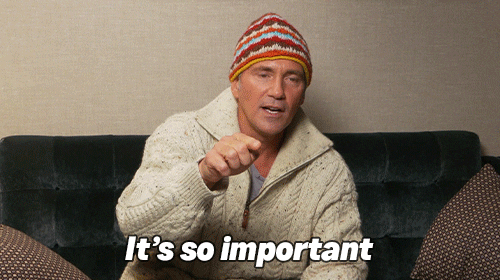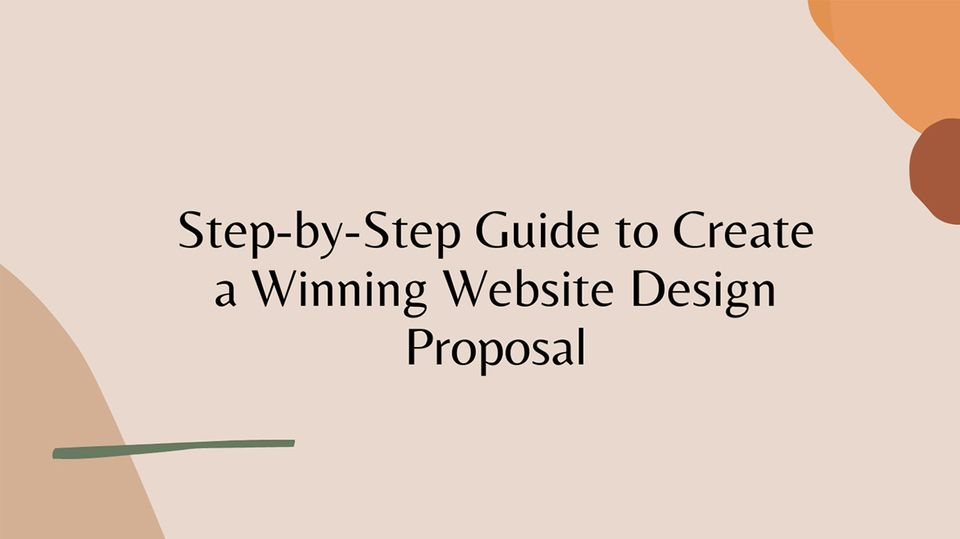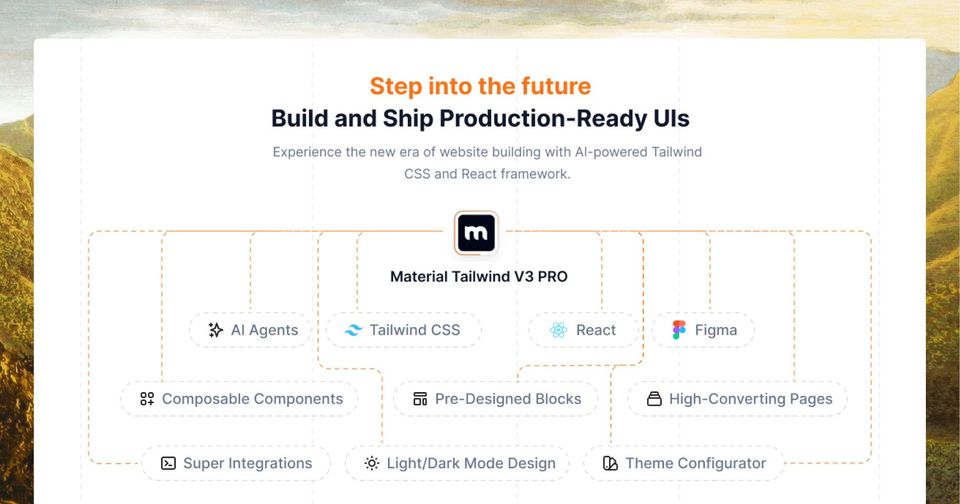What is your lead to deal rate? If you know the answer, you may as well realize that you are struggling to close deals. Salesforce analysis shows the challenges most businesses face: Salesforce analysis shows a 13% conversion rate for lead-to-opportunity and only a 6% conversion rate for opportunity-to-deal. A simple calculation shows the lead-to-deal rate is pretty low.
Growing your web design agency means not only you need to attract prospects but also improve the conversion rate to convert prospects to paying clients.
And one of the most important parts of the process to convert prospects to paying clients involves creating and presenting proposals. Obviously, it means with a highly convincing proposal, you have a greater chance of a conversion.
So what really makes a web design proposal effective? And how do you qualify a client before you send him a proposal?
After reading this article, you will be able to learn and apply your learning about 'how to conduct the requirement-discovery exercise and write an effective web design proposal that will allow you to present your ideas to potential clients and close more businesses.
The Preparation Before Writing Your Web Design Proposal

Before you get over-excited with your website design ideas, analyze the scenario from the client’s point of view. Consider this: what exactly are they requesting assistance with? And why should they pick you over other agencies that may be approaching for their web design project?
Because in the end, it is only the web design proposal that successfully wins the deal that understands the challenges and specific web design requirements of the potential client.
Before you draft the proposal, you should run the discovery session to know about their business and marketing goals, minute details about their target audience, their main competitors & verify those. Get a clear idea & verify their scope and budget
Use the following questions to get to know your client’s business,
- What does your client’s business do?
- Why does your client need a website?
- Why do they want to change the current website (if they already have one?
- What do they hope to get out of this new website?
- What is the desired action you would like a website visitor to do?
- Which WordPress website design theme the client is particularly looking for (Javelin, Adios, Divi, Uncode, Webify, or PILE)?
- What impact do they expect the new site to have on their website?
- What distinguishes your client from their competitors?
- Do they have a professional image or a unique brand identity?
- When would they want a project to be finished?
A bonus tip:
Before you start drafting the proposal, you should try to uncover information like whether/how prospective client engaged in a similar project before, its experience with a previous vendor, what worked, what did not work, what does success looks like to him, how do want the website to perform in next 12 months or who will be making the decision and so on.
You can use your network to gather unquoted experience, information/ requirements and use this information in your proposal to address their concern, underscore their aspirations.
Prepare a contemporary solution
Prepare a contemporary solution
Your web design proposal is more than just a bullet-point collection of facts and figures. Allocate some time to think strategically about the solution you’ll offer to the prospective client.
So make sure you provide SEO-friendly web design services that not only aims to boost clients’ ranking but also focuses on reducing the bounce rate and converting the page visitors into paying customers.
This will convince your client that more than simply giving the solution to their needs you are giving them a vision and building a contemporary plan for their company website. This way you’ll not only gain their trust but will establish a strong relationship with your client for the future.
Don’t rush things
You may be eager to get your proposal out of the gate as soon as possible, but remember that developing any exceptional piece of work requires some time. So, never ever promise your potential client that you’ll present the proposal in a very short period of time.
Instead, keep aside a few good hours to create something that is successful and connects well with the clients’ requirements.
Don’t forget the basics: Structure of your web design proposal

Here is the basic structure of a website design proposal below. I’ve also included a simple one-page proposal template to download at the end of this post :).
Introduction/Cover letter/project overview
The cover letter is the proposal’s elevator pitch so you better keep it short and to the point. It clearly explains the problem, addresses how your proposed web design solution aims to deal with the problem and describes how a successful project looks like.
The cover letter is the proposal’s elevator pitch so you better keep it short and to the point. It clearly explains the problem, addresses how your proposed web design solution aims to deal with the problem and describes how a successful project looks like. If you need assistance in keeping the cover letter short, remember that a summarizing tool can be used.
In short the cover letter of your web design proposal
- highlights the problem (challenges) and
- showcases the solution with SMART goals, output-driven example e.g. grow website traffic of young visitors using a smartphone, tablet by 30%, increase conversion of ideal prospect to free trial signup by 20%, landing page design to reduce bounce rate by 45%
Company Overview
In this section, introduce your company in just one or two paragraphs.
You don’t want to overwhelm readers with needless history, but at the same time, you must provide enough details for individuals who have never heard about your company and will get a sense of what you do and how you do it.
The solution
After outlining the challenges or the problems, you’ll need to recommend a solution. The rough outline or the sketch of your solution should clearly explain how your design services will address the issue of your client. This section should also lay out the entire process that you’ll follow so they will know what to expect.
This is how a typical web design process looks like,
- Discovery Phase: This includes a variety of analysis methods to understand what clients’ business and customers need.
- Content and SEO: This should include content creation, SEO audit, SEO strategy creation, and more.
- Creative and User Interface (UI): Explain how you plan to create a visual “look and feel” of the website e.g. responsive, AMP, UX
- Website Development: This should explain the technical part of the build, the terminology, and the tools you’ll use to build the slick and super speedy website for your client.
- Website Maintenance: This should outline your support and maintenance plan, add-on website hosting options
- Website Evaluation and Improvement: Explain how often you will be reviewing the website and make the necessary improvements after the launch.
Website budget details
58% of prospects want to know the price on the very first call whereas 54% of prospects want a product demo. (Source: Hubspot)
It shows how prospects want to screen or filter vendors based on budget consideration. Since you have already pitched your web design service, you should include the pricing information in your proposal.
If you are sending the proposal proactively (not consulting the client), you should deliberate about whether or not to include pricing information in the proposal.
Many web design agencies have a complicated set of offerings that overwhelms the prospect. One way to be clear with the price with these situations is by creating an interactive pricing table.
Use an interactive pricing table with a range of options that let your prospect or customer edit the quantities, select the web design services that best fit their needs, and allow them to customize your solution.
Schedule and Deliverables
This section will explain how your workflow will operate within a timeframe.
No matter how the timeline table is built, the following key prices of information needs to be captured by a web design proposal timeline,
- List of activities to perform
- The dates on which the activities should be completed (start and end time)
- Expected duration required for each task
Break down all the key steps and the timeline for your client. Providing an accurate timeline with deliverables allows you to set the client’s expectations early.
Proof of Work (Case study)
This section should highlight the success story of your existing client. Preferably include a client from a similar background, industry, scale, target audience, requirements, etc. The example should be relatable, it should establish trust, it should demonstrate assurance of the ROI. The idea is to reinforce that you are the best option prospect has.
Terms and Conditions
This section is critical since it defines expectations around payments, intellectual property, and other laws. This information must be included in your proposal so that the customer knows when to anticipate the contract and may make any necessary adjustments before the project begins.
End it with thank you
For the final page in the proposal, make sure to thank the client for their interest! Also, provide a bit of contact information if they are ready for the next steps.
Post-proposal phase

Make sure you take full advantage of this phase. If you haven’t heard back from them you must follow up after a week and keep following up until you get a YES or NO. And if the potential client says they’re not interested, then find out the reason why?
That’s it :)
I hope you all found this article helpful.
Author Bio
Sneha J
Sneha is a Content Marketer at Fresh Proposals - A Proposal Software. A writer by day and a reader and a vocalist by night. She’s passionate about SEO, Digital Marketing, Email Marketing, etc.





